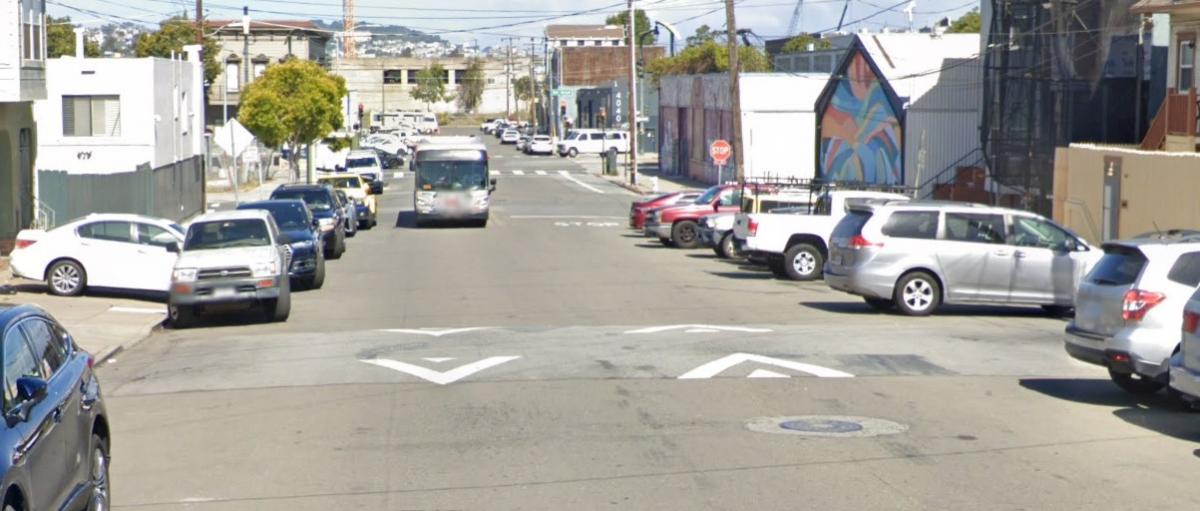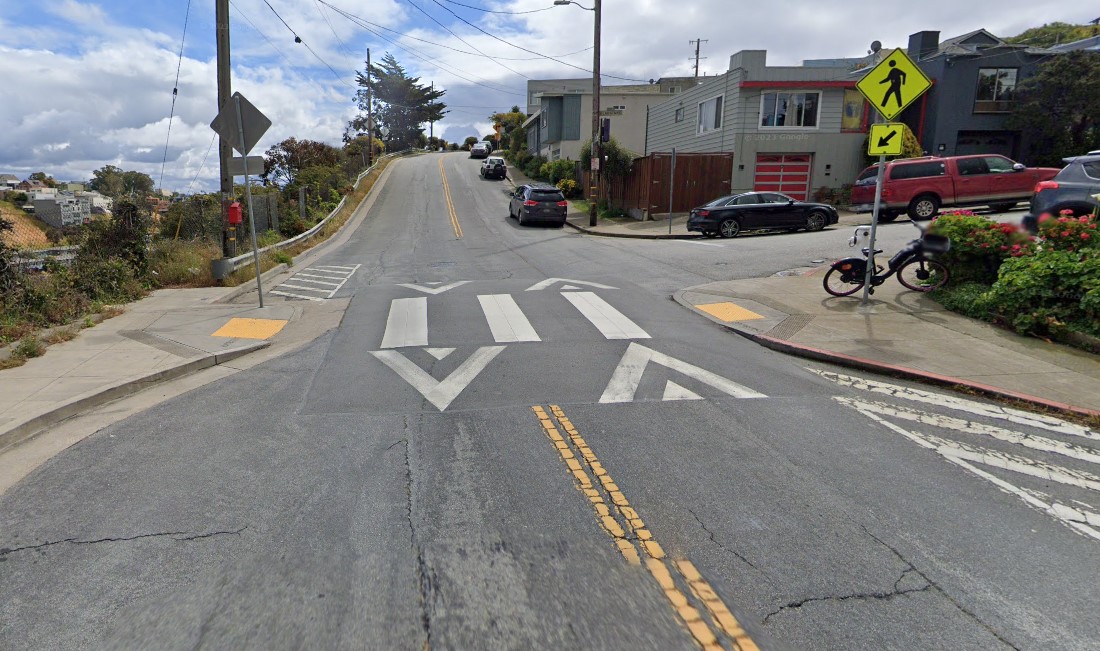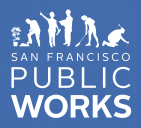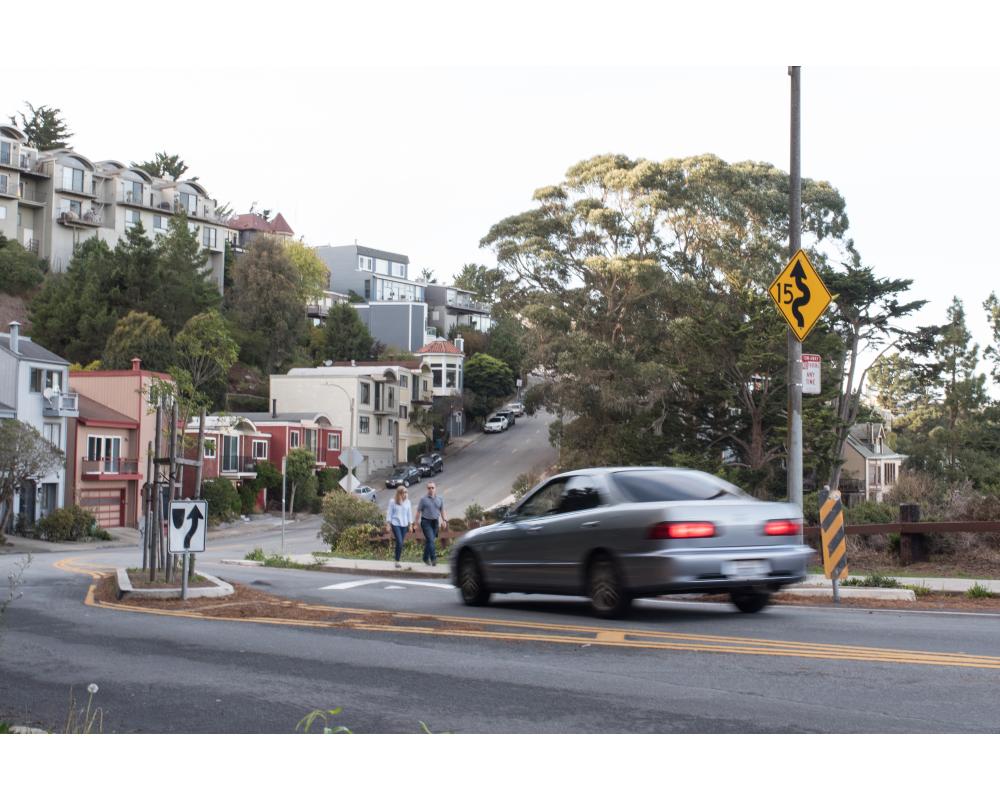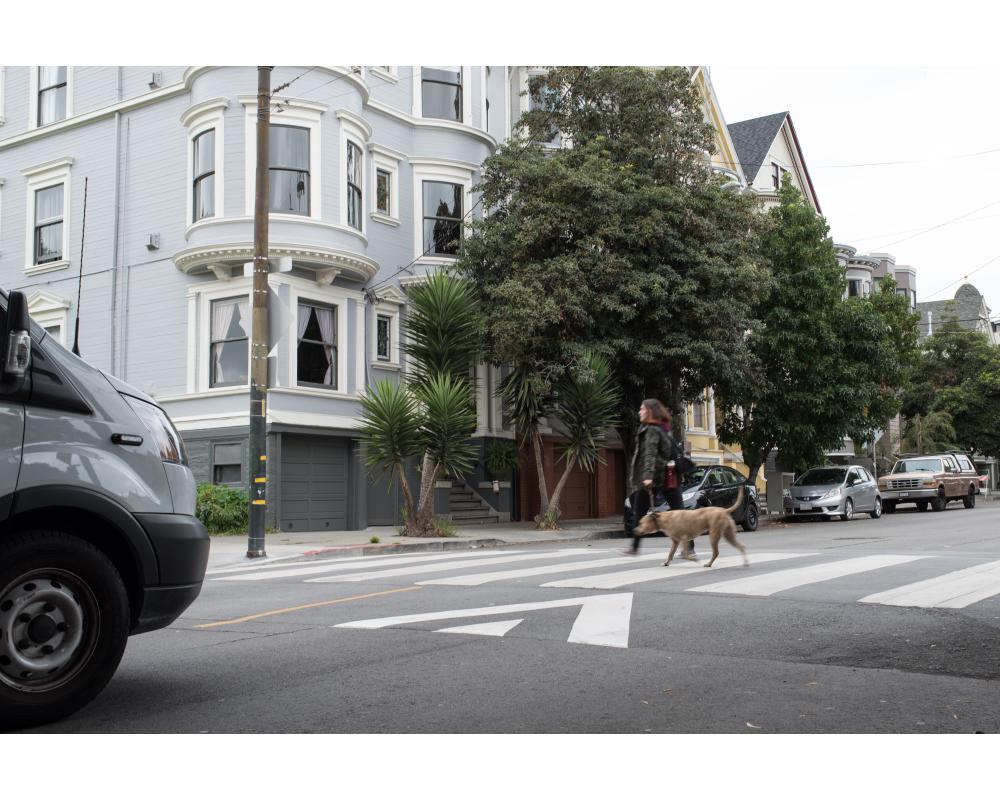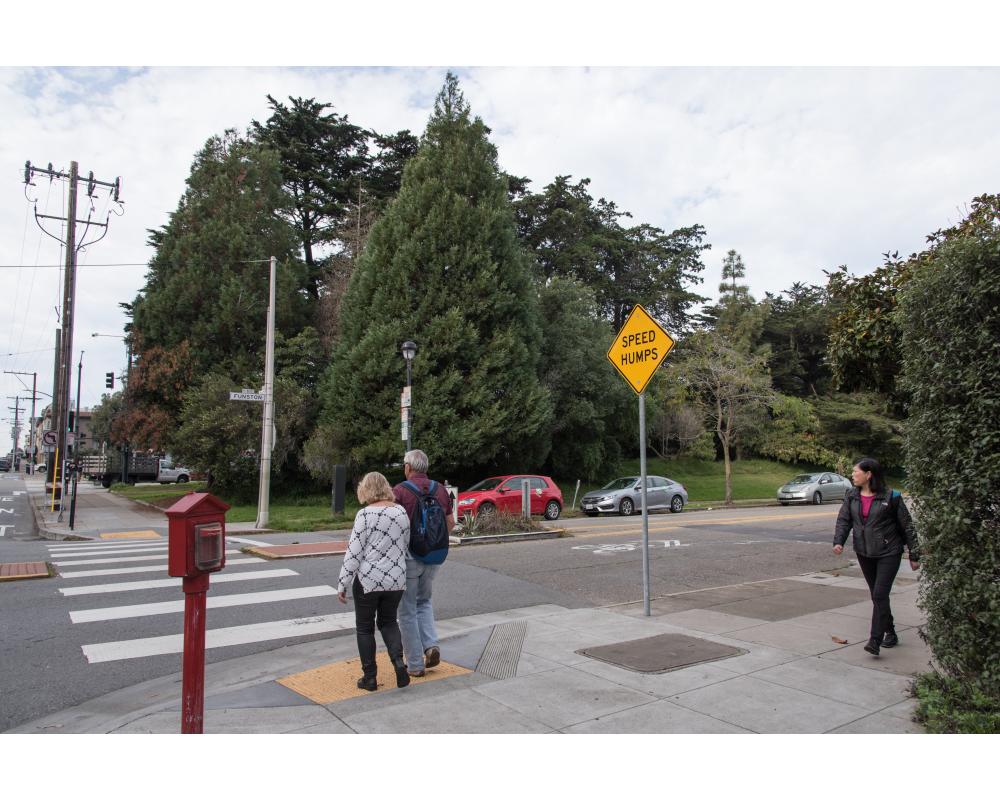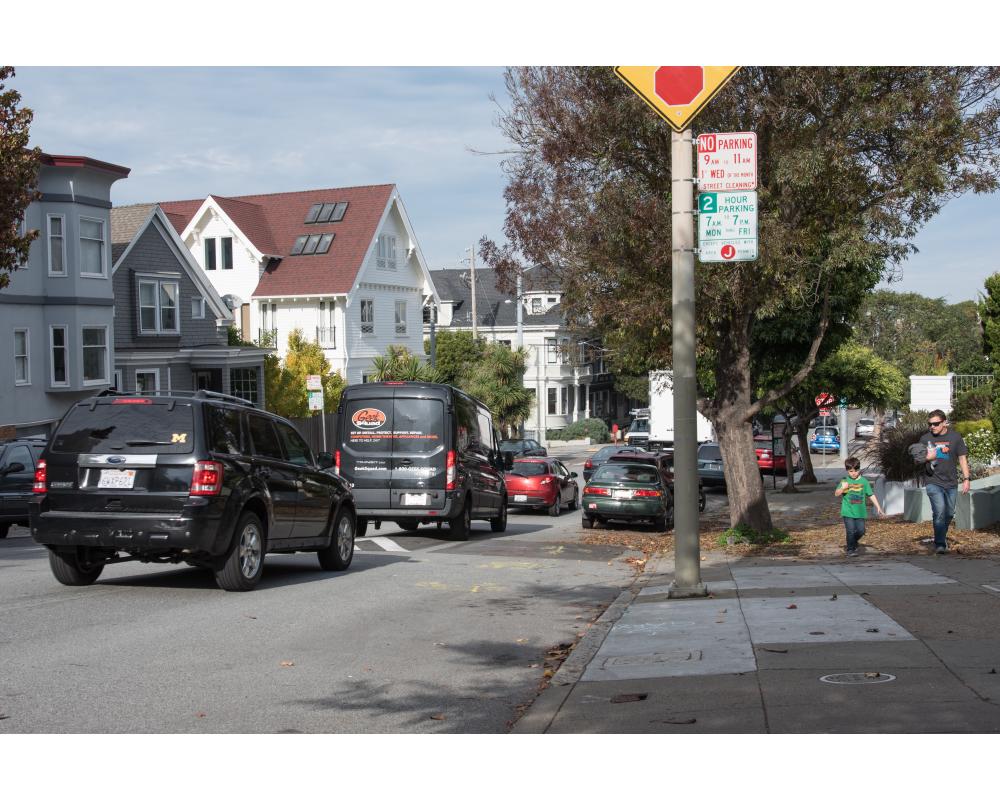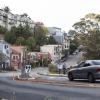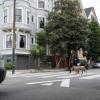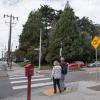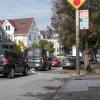Thank you for visiting the SFMTA Traffic Calming Program website!
Application forms are posted below and in the Related Content section on the right-hand margin of this webpage. Applications are accepted and initially screened continuously, followed by formal evaluations on a rolling, quarterly basis.
The current quarterly program cycle is FY24-25 Q4, which means all applications received from April 1, 2025 – June 30, 2025, will be grouped together for processing. Once the cycle closes, our goal is to collect data, evaluate locations, and notify applicants within three months whether their block has been accepted and will proceed to the next phase. That means notifications for the current cycle should go out in October/November 2025.
For applications submitted during FY24-25 Q3 cycle (January 1, 2025 – March 31, 2025), we expect our consultant to begin collecting traffic data in April then begin sending us the results in June. Once the data comes in, we will complete our evaluation and notify applicants as quickly as possible whether their block meets the criteria for acceptance and will proceed to the next step in the process.
For applications submitted during FY24-25 Q2 cycle (October 1, 2024 – December 31, 2024), we expect our consultant to begin collecting traffic data in February then begin sending us the results in April. Once the data comes in, we will complete our evaluation and notify applicants as quickly as possible whether their block meets the criteria for acceptance and will proceed to the next step in the process.
For applications submitted during FY24-25 Q1 cycle (July 1, 2024 – September 30, 2024), we expect our consultant to begin collecting traffic data in January then begin sending us the results in March. Once the data comes in, we will complete our evaluation and notify applicants as quickly as possible whether their block meets the criteria for acceptance and will proceed to the next step in the process.
For applications submitted during FY23-24 Q4 cycle (April 1, 2024 – June 30, 2024), we expect to receive all remaining data from our consultant in January. Once the data comes in, we will complete our evaluation and notify applicants as quickly as possible whether their block meets the criteria for acceptance and will proceed to the next step in the process.
For applications submitted during FY23-24 Q3 cycle (January 1, 2024 – March 31, 2024), we expect to receive all remaining data from our consultant in January. Once the data comes in, we will complete our evaluation and notify applicants as quickly as possible whether their block meets the criteria for acceptance and will proceed to the next step in the process.
For applications submitted during FY23-24 Q2 cycle (October 1, 2023 – December 31, 2023), data collection, analysis and evaluation are complete and accept/non-accept notifications have been sent. If you have not been notified please contact the Damon Curtis, Traffic Calming Program Manager, at damon.curtis@sfmta.com for more information.
For applications submitted during FY23-24 Q1 cycle (July 1, 2023 – September 30, 2023), data collection, analysis and evaluation are complete and accept/non-accept notifications have been sent. If you have not been notified please contact the Damon Curtis, Traffic Calming Program Manager, at damon.curtis@sfmta.com for more information.
One final note that applies to all quarterly program cycles, in an effort to minimize delay to individual applicants, every effort will be made to collect data in the order in which applications are received, so for a particular quarter, we will start with applications received in Month 1 of that cycle, followed by applications received in Month 2, and so on.
Please email TrafficCalmingApp@sfmta.com if you have questions or need additional information.
The SFMTA’s Traffic Calming Program is a resident-driven, application-based program to address mid-block speeding on residential streets in San Francisco. The program seeks to enhance neighborhood livability by reducing the adverse impacts of vehicular traffic on residential streets and creating safer and more comfortable streets for people walking, bicycling, and driving alike.
What Traffic Calming Is:
Different types of traffic calming are appropriate on different types of streets – most often it involves physical safety improvements such as speed humps, speed cushions, speed tables, raised crosswalks, median islands, traffic circles, changes to lane widths, and lane shifting. These measures have been proven to reduce speeding and increase safety. Typically, speed humps, speed cushions, and speed tables are the most common traffic calming measures on our streets given their effectiveness in managing vehicular speeds, but other measures can be proposed if they are deemed more effective on a given street.
What Traffic Calming Isn't:
The City’s Traffic Calming Program focuses on lower-cost measures effective at slowing vehicular speeds on residential streets. The program does not consider larger-scale mitigations to traffic congestion or speeding challenges, speeding on higher-volume arterial streets, nor does it involve multi-block infrastructure improvements. Instead, traffic calming is a resident-directed, block-by-block solution to address mid-block speeding on residential streets.
In addition, traffic calming does not include the use of regulatory measures such as stop signs. Stop signs designate right-of-way for drivers at intersections and can only be installed if certain warrants are met. SFMTA gives careful consideration to the installation of stop signs as they are frequently ignored if not warranted. People crossing on foot can be given a false sense of security if it is assumed that all vehicles will come to a complete stop at a stop sign. Unlike traffic signals or stop signs at intersections, which do not reduce mid-block speeds, traffic calming measures part of this program encourage slower vehicular speed along the length of a block rather than at intersections.
If you have traffic-related issues at a particular intersection, these can be addressed by another group of engineers at the SFMTA. These concerns are best communicated with the SFMTA through the city’s 311 system.
The Process to Apply for Traffic Calming
1. Application: Residents who are concerned about speeding on their block are encouraged to submit an application. Applications for the Fiscal Year 2024-2025 Program cycle will be posted online when they are available. Please submit your completed Traffic Calming Request Form in accordance with the instructions provided on the form and below. This is the first step in the process of evaluating traffic calming for each street.
3. Inform Applicants: Once the evaluation and ranking phase is complete, applicants are informed of whether or not their block has been accepted and will move forward to having a traffic calming device proposed for their location. This process typically occurs within six months of the application deadline.
4. Engineering and Design: Once the evaluation and ranking phase is complete, SFMTA staff will develop potential design solutions for accepted blocks. In most cases, speed humps will be proposed as they are simple to construct, cost-effective, and have been proven to be the most effective tool in reducing vehicular speeds.
5. Public Hearing: Traffic calming proposals are heard at an SFMTA Public Hearing and residents are encouraged to attend or comment on the proposal. The Public Hearing serves as the single legislative approval step for traffic calming measures as they are not heard before the SFMTA Board of Directors. Following the public hearing, final approval authority rests with the City Traffic Engineer per Section 201 of the San Francisco Transportation Code.
6. Construction: Once the project is approved, project designs are finalized and construction can begin. Most improvements will be installed within 18 months of the public hearing date. Many factors influence the construction timeline including the number of traffic calming projects in the application year, weather, and availability of Public Works and/or private contractor construction crews to complete the work.
Frequently Asked Questions
Why are applications required?
Applications are required to identify locations where there are speeding concerns. Unfortunately, the demand for traffic calming exceeds the SFMTA’s ability to plan, design, and construct traffic calming projects. Requiring an application ensures there is initial community support for traffic calming before the SFMTA commits its limited resources to begin the process.
How are streets selected?
Streets are selected based on the following:
- Eligible residential street: The block must be a local residential street where speed humps and other speed reduction measures would be effective. Generally these are two-lane streets with fewer than 7,500 vehicles per day. Major streets categorized as arterials or collectors are not addressed through residential traffic calming, but rather through other SFMTA programs and projects.
- Measurable speeding problem: Streets will only be included where a speeding problem has been demonstrated based on data collection and associated criteria. Generally, this means 85% or more of people driving on the block are doing so at a speed of 5 mph or more above the speed limit, unless other criteria justify the need for traffic calming. These additional criteria include vehicle volumes, collision history, access to transit, presence of a bike route, and certain adjacent land uses that are supportive of walking and bicycling. However, speeding must be measured on the block in order for an application to be successful in being accepted into the traffic calming program.
- Prioritized ranking: Eligible applications will be ranked to determine the list of locations most in need of traffic calming in a given application year. The highest ranked locations will receive traffic calming based on funding availability. Funding levels vary from year to year, but typically the SFMTA has funding for approximately 30-40 traffic calming projects per year.
How do I know if my street meets the eligibility criteria?
The SFMTA will measure speeds once applications are submitted. However, before you apply, you can also take a look at the resources below to see if your street may be unlikely to qualify.
Streets with the following characteristics are not likely to be eligible residential streets:
- Streets that are classified as "arterial" or "collector" in the San Francisco General Plan
- Streets that are frequently used by fire trucks, or have fire stations on them
- Streets with more than two travel lanes
If your street is eligible and has a speeding problem, the following could increase the ranking of your block:
- If your block is in a school zone or within close proximity to commercial/retail activity
- If there is a community center, senior center, park, or playground on your block
- If there is a frequent Muni route within close proximity to your block
- If your street is on the bicycle network
What if I want something other than a speed hump?
Speed humps are the most effective measure at reducing speeds and are less resource intensive than less effective tools such as median islands, traffic circles, or lane re-striping. If you apply for traffic calming, your block will first be evaluated for speed humps and only considered for other measures if speed humps are infeasible for some reason.
If you are concerned about safety an intersection, rather than speeds mid-block, traffic calming may not be the appropriate solution. For instance if your primary concerns are about stop signs, yielding, or visibility, these issues are best addressed by another group of engineers at the SFMTA. These concerns can be communicated to the SFMTA through the City's 311 online system, or call 311 (for calls outside of San Francisco, dial 415-701-2311).
Why is traffic calming only implemented now on a block-by-block basis?
Previously, the SFMTA used to consider traffic calming from an “area-wide” perspective. The area-wide process was developed as a way to look at multiple locations in the same neighborhood together, to consider traffic calming from a community perspective. The boundaries of area-wide projects were drawn to incorporate all residential streets between arterials, major collectors, and/or commercial streets. However, the process was viewed by SFTMA staff and residents as being time-consuming and resulting in unpredictable construction timelines. Often times, the more complex and expensive measures recommended through an area-wide planning process were not constructed, and the long timeline often resulted in changing community priorities that weren’t reflected in the area-wide traffic calming plan. Finally, due to the fact that the area-wide approach to traffic calming tended to involve only the most dedicated members of a community, many believed that the area-wide process did not necessarily reflect the views and concerns of all neighbors.
A resident-driven, block-by-block approach to traffic calming that relies on a data-driven approach ensures that resources are allocated to those streets in which demonstrated speeding and traffic-related concerns exist, and where there is broad resident acceptance for traffic calming.
TYPICAL VERTICAL DEFLECTION TRAFFIC CALMING DEVICE TYPES
SPEED HUMPS - this is a uniform raised mound across a road. It is generally the most effective traffic calming device, but it is often not supported by the San Francisco Fire Department since humps can slow down emergency response if encountered on too many streets. SFFD is required to approve all traffic calming on streets per the state Fire Code.
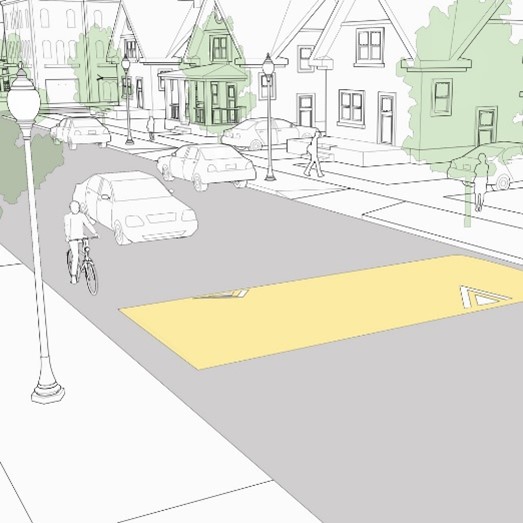
Speed Hump | National Association of City Transportation Officials nacto.org
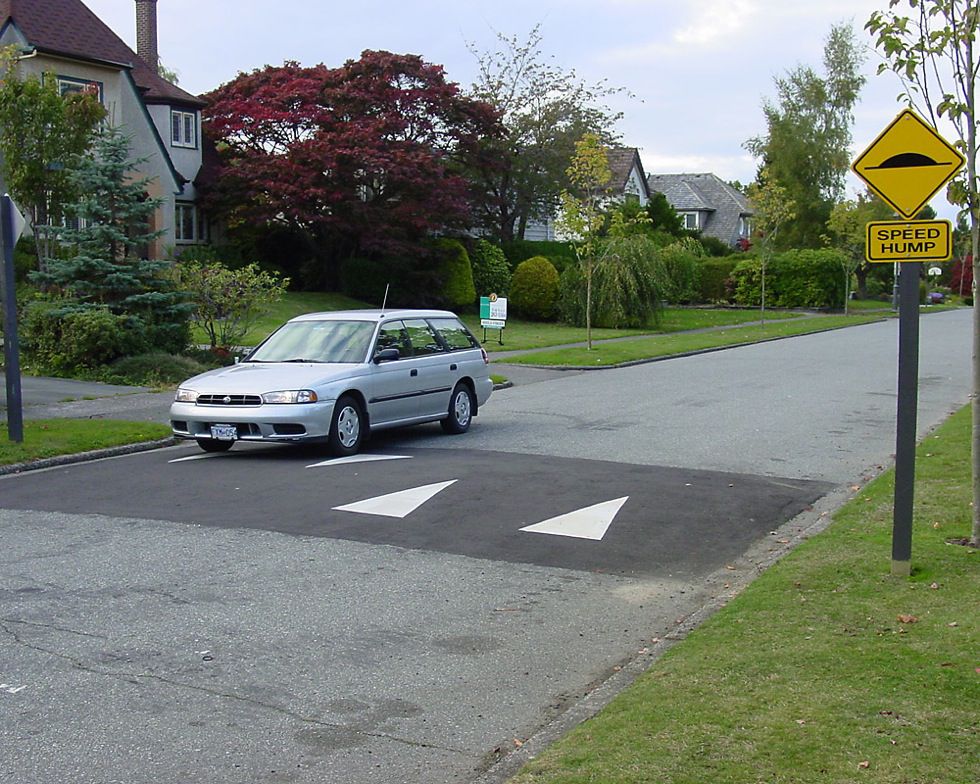
SPEED CUSHIONS - This is a hump that has wheel slots. The goal of these slots is to minimize impact on vehicles like fire engines and public transit buses.

Speed Cushion | National Association of City Transportation Officials nacto.org
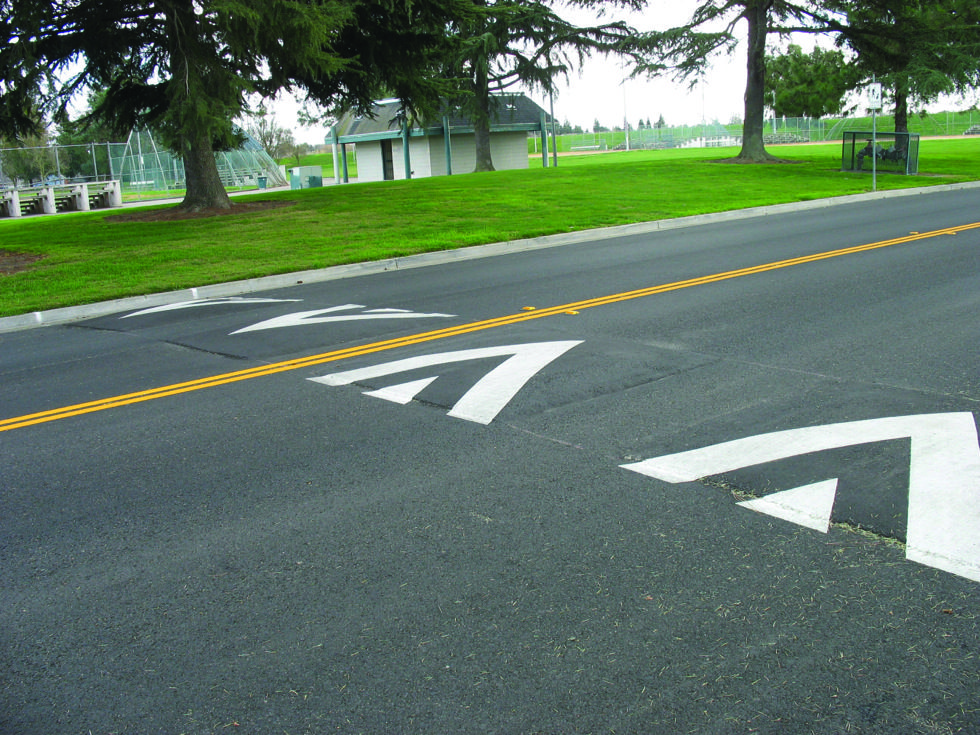
SPEED TABLES & RAISED CROSSWALKS - Also like humps, an effective device to slow down vehicles midblock and at uncontrolled crosswalks but often opposed by San Francisco Fire Department due to negative impact on emergency response.
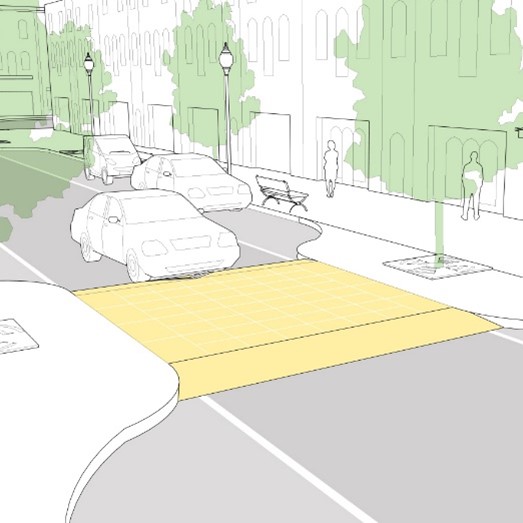
Speed Table | National Association of City Transportation Officials nacto.org
